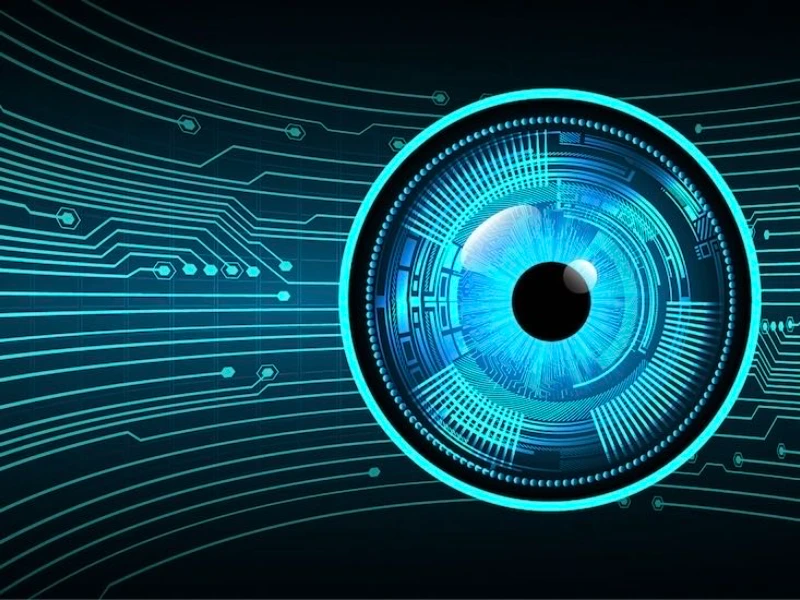- Computer vision is a subfield of AI, which enables machines to derive some meaningful information from any image, video, or other visual input and perform the required action on that information.
- Image classification, object detection, object tracking, and semantic segmentation are the 4 major tasks computer vision can be used.
- As per the increasing demand for AI and Machine Learning technologies, computer vision also has a great demand among different sectors. It has a massive impact on different industries, including healthcare, transportation, manufacturing, agriculture , retail and etc.
Computer vision, a branch of artificial intelligence, has transformed the way we interact with technology and perceive the world around us. By enabling machines to interpret and understand visual information, computer vision has paved the way for numerous groundbreaking applications across various industries.
From autonomous vehicles and healthcare to retail and agriculture, computer vision is driving innovation and reshaping industries in profound ways. As technology continues to advance, we can expect to see even more groundbreaking applications of computer vision that will further enhance our lives and redefine the possibilities of artificial intelligence.
Also read: Is speech recognition machine learning?
1. Healthcare
Computer vision has ushered in a new era of personalised healthcare, offering innovative solutions for medical imaging, diagnosis, and treatment. From detecting diseases in medical images such as X-rays, MRIs, and CT scans to assisting surgeons during minimally invasive procedures, computer vision algorithms play a crucial role in improving patient outcomes and streamlining healthcare workflows. With the ability to analyse vast amounts of medical data quickly and accurately, computer vision is revolutionising diagnostics and contributing to advancements in precision medicine.
Also read: How AI and Machine Learning revolutionised the beauty industry
2. Transportation
In the transportation sector, computer vision has become instrumental in various applications. It powers self-driving cars by detecting objects like road signs and traffic lights, while also enabling 3D mapping and motion estimation. Additionally, computer vision enhances pedestrian detection systems in smart cities, identifying pedestrians in images or videos despite variations in attire and lighting conditions. Moreover, it plays a crucial role in monitoring road conditions and detecting defects, increasing efficiency in road maintenance and reducing safety risks. Overall, computer vision is revolutionising transportation with its diverse applications, improving safety and infrastructure management.
3. Retail and E-Commerce
In the retail industry, computer vision is transforming the shopping experience both online and offline. Retailers leverage computer vision technology to enhance customer engagement, optimise inventory management, and streamline checkout processes. By analysing customer behavior and preferences through video surveillance and image recognition, retailers can personalise recommendations, optimise product placements, and detect theft or shoplifting in stores. In e-commerce, computer vision enables visual search capabilities, allowing customers to find products based on images rather than keywords, thereby improving search accuracy and driving conversions.
4. Manufacturing
In the manufacturing industry, automation is booming, with computer vision playing a crucial role in providing automatic solutions. Key applications include defect detection, where computer vision enables the detection of defects such as cracks in metals and paint defects with precision down to 0.05mm. Additionally, computer vision techniques like Optical Character Recognition (OCR) are utilised to analyse text and barcodes on product packaging, facilitating tasks like inventory management and verification against databases. Furthermore, computer vision technology is employed in biometrics, enabling fingerprint recognition and other forms of biometric authentication. Lastly, computer vision contributes to 3D modeling by generating digital representations of objects, with applications ranging from robotics and autonomous driving to AR/VR and 3D scene reconstruction.
5. Agriculture
Computer vision is revolutionising agriculture by empowering farmers with valuable insights and precision farming techniques. With the help of drones equipped with cameras and sensors, farmers can monitor crop health, detect pests and diseases, and optimise irrigation and fertiliser usage with unprecedented accuracy. Computer vision algorithms analyse aerial imagery and satellite data to provide actionable insights, enabling farmers to make data-driven decisions that enhance crop yields, reduce costs, and promote sustainable agriculture practices.

